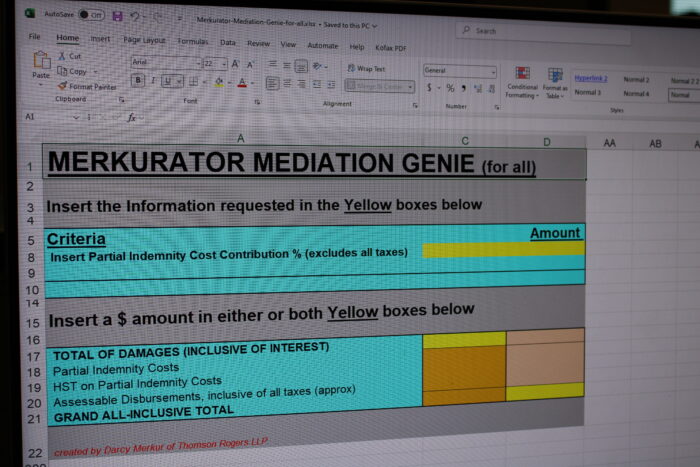8 More Things You (Probably) Don’t Know About Motor Vehicle Accident Injury Lawsuits in Ontario
Author(s): Robert M. Ben*
April 20, 2021

Each year, thousands of drivers, cyclists and pedestrians are injured in motor vehicle accidents in Ontario. Many never fully recover from their injuries and are left to deal with pain, limitations, medical and rehabilitation expenses and loss of income. Serious injury victims may have a right to compensation (damages) through the court system.
In a previous post, we shared Eight things you probably don’t know about motor vehicle accident injury lawsuits in Ontario. Here are 8 more:
- DEFENDANTS (USUALLY) HAVE INSURANCE – Your lawsuit will be against the at-fault driver. Still, his insurance company will defend him and pay any judgment up to the limits of the policy. Unfortunately, the jury deciding your case is not allowed to know this. Most drivers have $1 million in insurance. If your damages exceed the available insurance, you may never collect all of your damages unless the driver has significant personal assets or you have extra “underinsured” coverage on your own automobile insurance policy (see No. 2).
- WHAT IF THE AT-FAULT DRIVER WAS UNINSURED OR UNDERINSURED? – You can sue your own automobile insurance company for “underinsured” coverage. This only works if your own insurance has greater limits than the at-fault driver’s insurance. For example, if the at-fault driver has $1 million in coverage and you have $2 million in coverage, you can sue your own insurance company for the difference.
- WHAT IF THE INJURY WAS CAUSED BY A HIT-AND-RUN DRIVER? – You can sue your own automobile insurance company for “unidentified motorist”. This is limited to $200,000. You can then sue your insurance company up to the limits of your “underinsured” coverage (See No. 2).
- PAIN AND SUFFERING – Your pain and suffering are not worth as much as you think. In the 1970s, the Supreme Court of Canada effectively imposed an upper limit or cap on damages for pain, suffering and loss of enjoyment of life. In 2021 dollars, the upper limit is roughly $390,000 today and is reserved for the most serious injuries, such as severe brain or spinal cord injuries.
- DAMAGES DEDUCTIBLE – If you are awarded less than roughly $138,000 in damages for pain and suffering in a motor vehicle injury lawsuit, the at-fault driver’s insurance company gets to take back roughly $40,000 in the form of a deductible. These amounts increase each year for inflation.
- INCOME LOSS – You can only recover 70% of your gross pre-accident income up to the date of trial and 100% thereafter.
- SET-OFF OF COLLATERAL BENEFITS – Most motor vehicle accident injury victims have access to no-fault benefits to cover some of their healthcare expenses and loss of income. The at-fault driver’s insurance company gets a deduction or credit for the full value of any available benefits from any damages awarded to you (which can be harsh if you are found partly at-fault and your damages are reduced by the degree of your fault).
- SETTLEMENTS ARE TAX-FREE – The proceeds of any personal injury lawsuit settlement are generally tax-free (although any interest earned on investing the proceeds is taxable).
Laws change from time to time and may or may not apply depending on the particular facts of your case. If you are injured in a motor vehicle accident, you should promptly seek legal advice from an experienced personal injury lawyer.
Thomson Rogers offers free consultations, so please feel free to reach out to us at any time. We are here to help.
Robert Ben is a personal injury lawyer and a partner at Thomson Rogers. Robert is listed in peer-reviewed publications – Lexpert® and The Best Lawyers™ in Canada and is ranked AV pre-eminent in Martindale-Hubbell ®. Robert can be reached at 416-868-3168 or by EMAIL.
For Thomson Rogers updates, please subscribe to our email list here.
Share this




